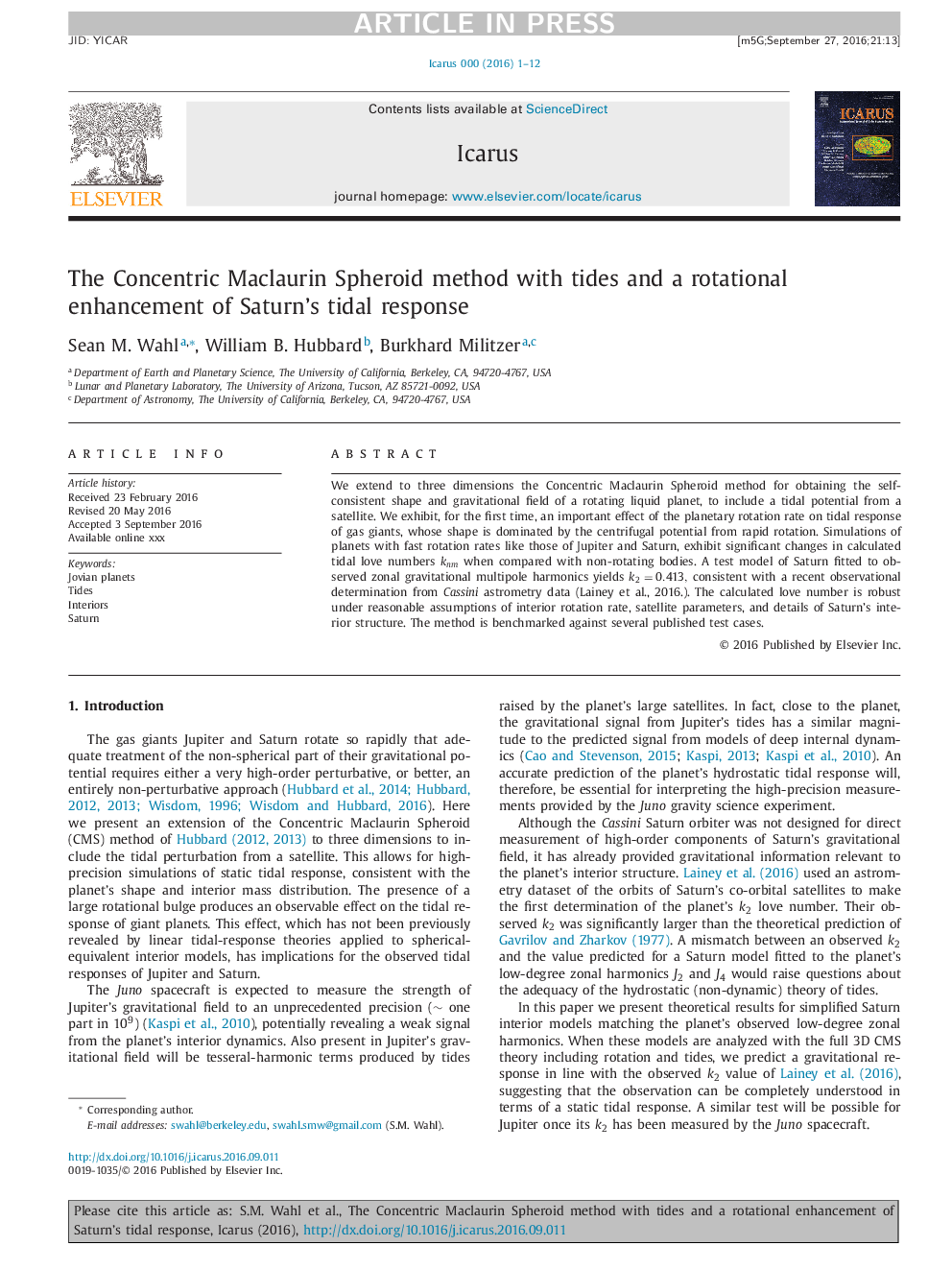| Article ID | Journal | Published Year | Pages | File Type |
|---|---|---|---|---|
| 5487413 | Icarus | 2017 | 12 Pages |
Abstract
We extend to three dimensions the Concentric Maclaurin Spheroid method for obtaining the self-consistent shape and gravitational field of a rotating liquid planet, to include a tidal potential from a satellite. We exhibit, for the first time, an important effect of the planetary rotation rate on tidal response of gas giants, whose shape is dominated by the centrifugal potential from rapid rotation. Simulations of planets with fast rotation rates like those of Jupiter and Saturn, exhibit significant changes in calculated tidal love numbers knm when compared with non-rotating bodies. A test model of Saturn fitted to observed zonal gravitational multipole harmonics yields k2=0.413, consistent with a recent observational determination from Cassini astrometry data (Lainey et al., 2016.). The calculated love number is robust under reasonable assumptions of interior rotation rate, satellite parameters, and details of Saturn's interior structure. The method is benchmarked against several published test cases.
Keywords
Related Topics
Physical Sciences and Engineering
Earth and Planetary Sciences
Space and Planetary Science
Authors
Sean M. Wahl, William B. Hubbard, Burkhard Militzer,
